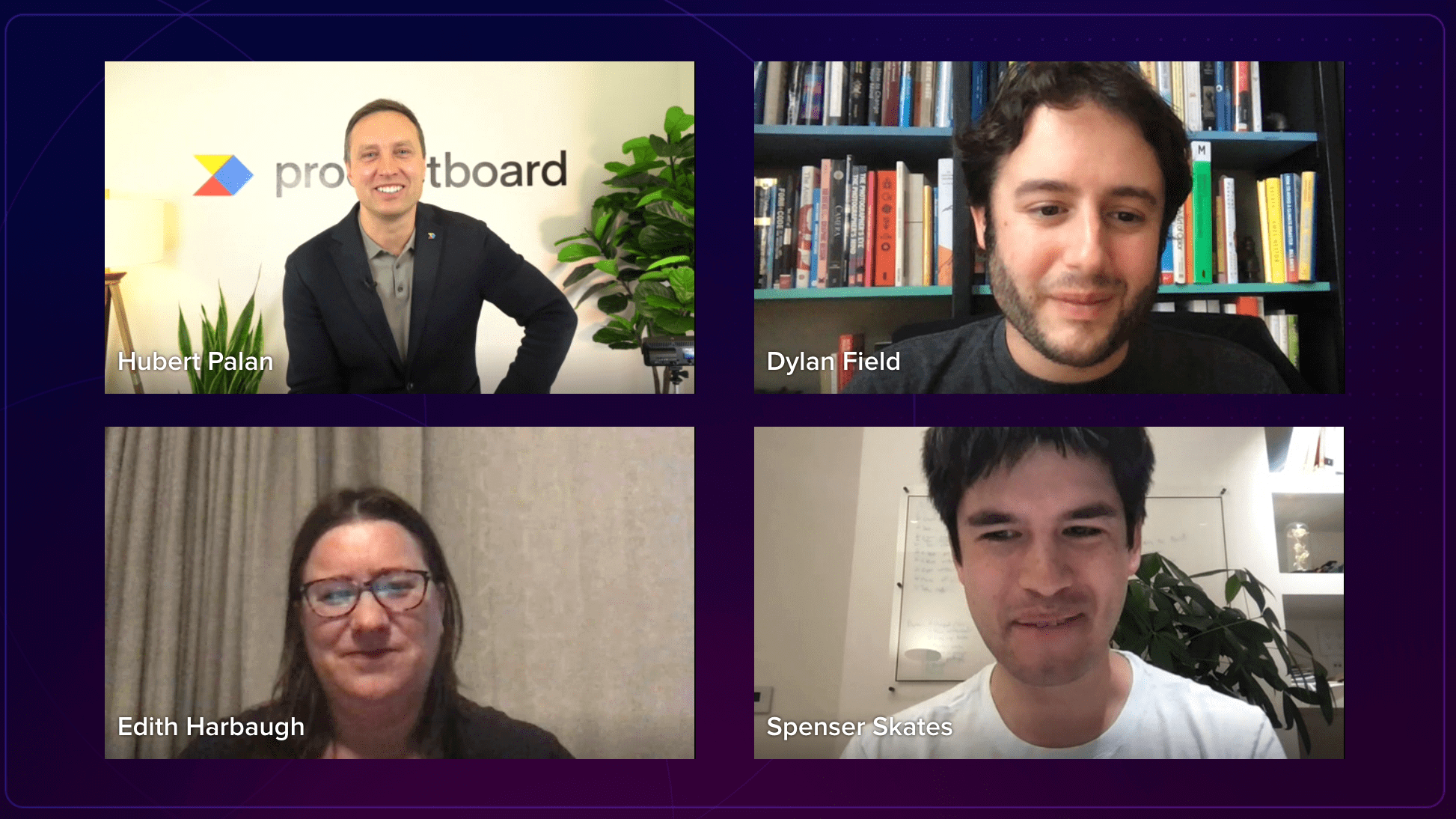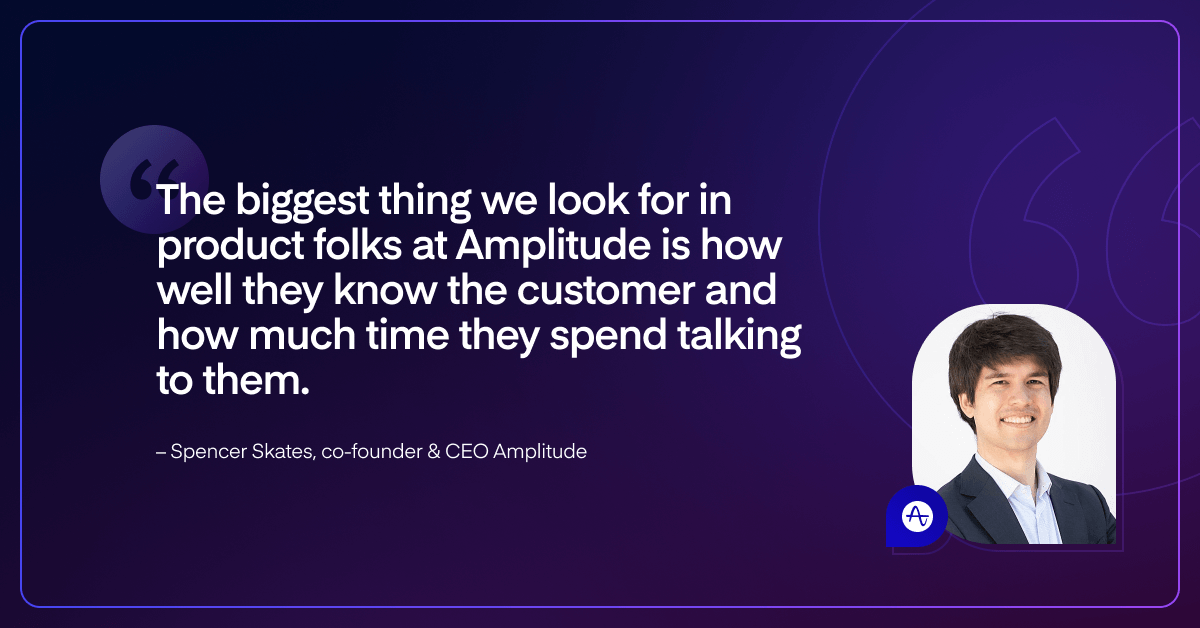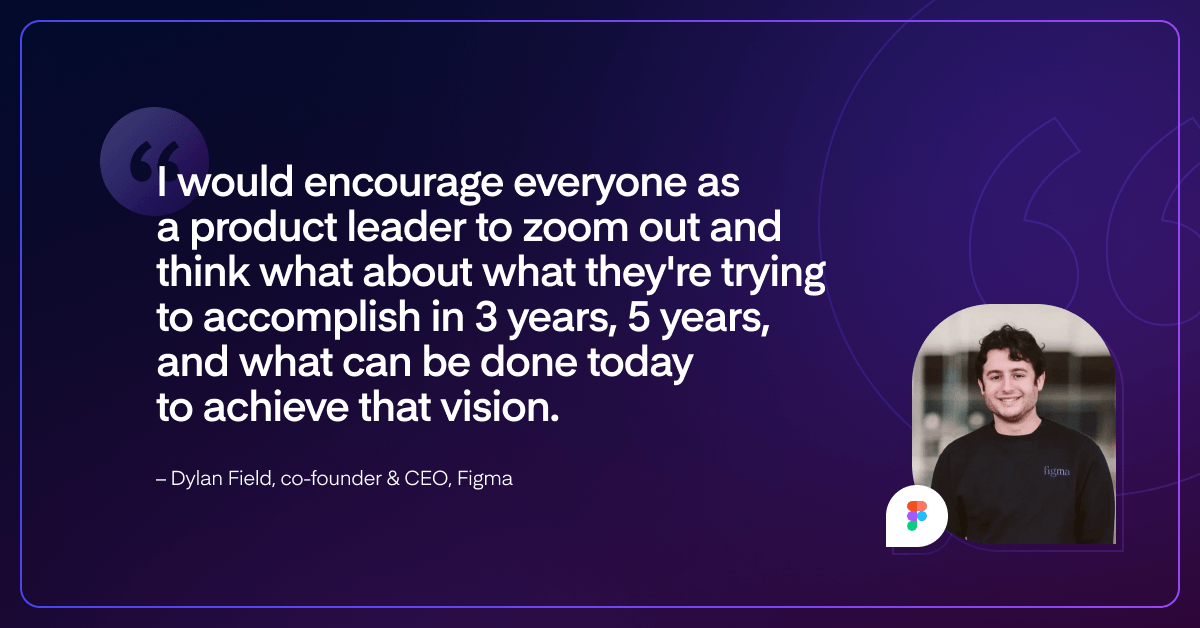Working with a product-centric CEO: Lessons from Figma, Amplitude, and LaunchDarkly

When Edith Harbaugh describes the period we’re living in as “the golden age of product management,” she speaks from a place of deep experience.
Though she is currently the co-founder and CEO of LaunchDarkly, which provides a feature management platform aimed at large enterprises, Edith has a background in product management — though she admits it was less of a golden age back then.
“I started when it was all done on a company’s premises, where you shipped a release once a year and crossed your fingers that it would work,” she said during a session at the recent Product Excellence Summit. “It’s now the golden age because you can iterate quickly, you can push stuff out.”
It might also be a golden age because people like Edith are now leading companies. She, along with Dylan Field, co-founder & CEO of Figma, Spenser Skates, co-founder & CEO of Amplitude, and Hubert Palan, co-founder & CEO of Productboard, recently joined Productboard’s Product Excellence Summit to discuss what it means to be a “product-centric CEO.”
Read on for the highlights below or head here to watch the entire presentation.
Watch “How to work with product-centric CEO” on-demand
Product-centric CEOs look for one thing when hiring product leaders
Spenser Skates admits he got lucky. When he went looking for a head of product at Amplitude, which offers analytics tools as well as data optimization systems, he happened to meet a customer who was already running a consulting business selling Amplitude’s offerings. It wasn’t long before Spenser knew he would be hiring Justin Bauer, who has been Amplitude’s Head of Product since 2015.
“He was the first person I had met who had an incredibly strong point of view about where Amplitude should go and why,” Spenser recalled.
Justin also demonstrated a quality that is incredibly important to CEOs like Spenser.
“The biggest thing we look for in product folks at Amplitude is how well they know the customer, and how much time they spend talking to them. They should spend at least 50% of their time talking to the customer — not writing spec sheets, not studying the competitors. It’s really about understanding the customers.”

Edith agreed, adding that LaunchDarkly has rolled out early access programs to gauge customers’ interest in a new feature. This works a lot better than “hypothesizing something to death,” she said, but it means the CEO has to ensure everyone feels empowered to talk to customers regularly.
“Sometimes you need to build something to see if a customer wants it, but you should at least have somebody in mind that you can go out to,” she said.
Product-centric CEOs are natural-born collaborators
At Figma, which provides a visual platform to help product teams build faster and easier, co-founder & CEO Dylan Field sees his VP of Product Yuhki Yamashita as a strategic partner in helping the company grow. As with Spenser and Justin, the fit was obvious from the get-go.
“We shared so much brain space. We thought about things very similarly and he was also someone I thought I’d learn a lot from. The way he thought in frameworks was really special,” Dylan said. “He is just amazing at working with people collaboratively to get them on the same page, but also at product vision. That was evident as soon as we started talking. We’re able to go through and structure a problem and figure out how to solve it together.”

When that collaborative spirit isn’t there, it affects not only the product but the culture of the company. That’s what drove Edith to enter the field in the first place.
“I became a product manager after being an engineering manager because I was really frustrated,” she said. “I saw us doing a lot of huge releases with the loudest person in the room driving the train.”
Spenser said it’s important for both CEOs and product execs to be clear on establishing the right dynamic.
“The fit between the CEO and head of product is custom and unique and special to each company,” he said.”There are definitely CEOs out there that want to manage every single detail and need a head of product who can work with that, and there are also CEOs who are super hands-off and everywhere in between.”
The best product-centric CEOs know when to let go
“When I was a day-to-day product manager I was extremely hands-on. I would be in the mockup scrums, debating whether we needed a radio button or a checkbox,” Edith said. “I realized that was not productive for me to do anymore. I needed to just let go of that. I had a lot of opinions, but the people who were closer to it were actually much better equipped to make those decisions.”
Today, she said her focus is on offering guidance on new features and add-ons, usually by tying them to specific personas.
Spenser demonstrated just how far he was willing to trust his head of product by letting him make the ultimate choice on which of two possible companies Amplitude would acquire. And, as it turned out, Justin didn’t choose the one Spenser had been advocating.
“Whoever it is that has the most information will make the best decision,” he explained. “I think it’s important to be clear in your head as CEO as to whether you’re sharing your opinion because it’s important to the direction of the company versus your opinion as an individual.”
This doesn’t mean there won’t ever be disagreements between CEOs and product leaders, of course, but it doesn’t have to get adversarial, either.
“When we do disagree I think that’s usually a good sign, because that means there’s something interesting for us to dig into,” Dylan said. “It might mean we have less understanding of the problem we’re trying to solve, and as a result we can push harder on that.”
The entire half-hour session is well worth watching in its entirety and is available on demand. In the meantime, one final spoiler: the panelists suggested that, given the way things are going, there are probably a lot more product leaders who will one day take on a CEO role.
“Product is becoming the most important function in every company because product is key to company growth,” Spenser said. “If you can do well in the product function, you can become the most important business leader of tomorrow.”





![The CPO’s Blueprint for Annual Planning: An Opportunity to Drive Change [Part 3]](https://www.productboard.com/wp-content/uploads/2024/11/strategy-blueprint-560x293.png)
